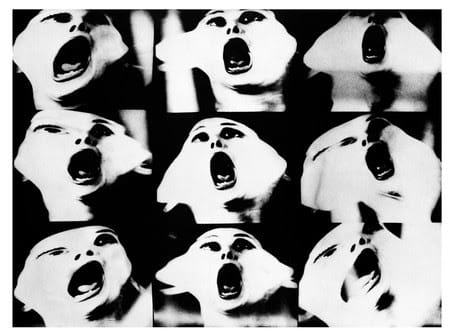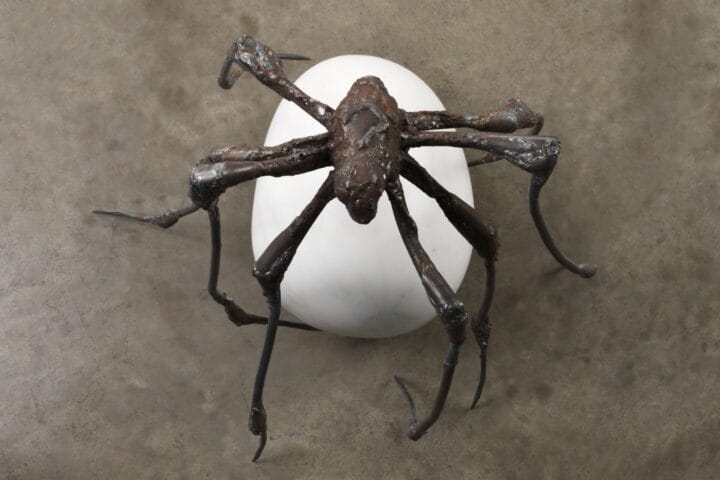NEW YORK— Dissident Practices, on view April 19-June 16, 2023, at Anya and Andrew Shiva Gallery at John Jay College of Criminal Justice, explores how Brazilian women artists respond to social change — from the military dictatorship in the mid-1960s to the return to democracy in the mid-1980s, the social changes of the 2000s, the rise of the Right in the late-2010s, and the recent development of a more diverse younger generation fighting for gender equality and LGBTQI+ rights. Curated by Claudia Calirman, Associate Professor and Chair of the Department of Art and Music at John Jay College of Criminal Justice, the exhibition will present more than 30 works, including sculpture, video, and photography by 12 prominent and emerging Brazilian artists.
Among the artists featured are Letícia Parente (1930–1991), Anna Bella Geiger (b. 1933), Anna Maria Maiolino (b. 1942), Regina Vater (b. 1943), Gretta Sarfaty (b. 1947), Lenora de Barros (b. 1953), Berna Reale (b. 1965), Rosana Paulino (b. 1967), Renata Felinto (b. 1978), Fabiana Faleiros (b. 1980), Aleta Valente (b.1986), Lyz Parayzo (b. 1994). The exhibition, presented in conjunction with the publications of the book Dissident Practices: Brazilian Women Artists, 1960s–2020s by Claudia Calirman (Duke University Press, April 2023), will open with a reception on Wednesday, May 3, 7-9 p.m. following a roundtable discussion.
EXHIBITION HIGHLIGHTS
One of the most significant artists working from Brazil today, Anna Maria Maiolino explores the intricacies of language in her video In-Out (antropofagia) (In-Out [anthropophagy; 1973–74]). Close-ups of two mouths alternately occupy the full screen—one male, one female—attempting to communicate, but to no avail. In her pioneering video Passagens I (Passages I; 1974), Anna Bella Geiger obsessively repeats, ad absurdum, the climbing of different sets of staircases leading nowhere.
Leticia Parente’s video Preparação I (Preparation I; 1975) explores how women are targeted by advertising and the media, dictating standards and behaviors to make them desirable, young, beautiful, healthy, and modern. In her video-performance Palomo (2012), Berna Reale embodies the imposing, authoritarian figure of a police officer, pointing to abusive institutional power within the criminal justice system.

In the photo-sequence Transformações I (Transformations I; 1976), Gretta Sarfaty is seen with open-mouthed expressions. The multiple images of her face, stretched to the point of absurdity, generate grotesque, comedic expressions. The black-and-white photomontage Língua vertebral (Vertebral tongue; 1998), features an image of Lenora de Barros’s outstretched tongue on which she has placed a small model of the spinal column.
In the celebrated series Bastidores (Embroidery Hoops; 1997), Rosana Paulino stitched coarse black threads over the eyes, mouths, and throats of photographs of her female relatives taken from family albums, calling attention to the condition of Black women in Brazil. Perverse mechanisms of racial discrimination are likewise addressed in Renata Felinto’s performative practice. In her video performance White Face and Blonde Hair (2012), Felinto dresses as a white executive and walks through São Paulo’s upscale Jardins neighborhood, browsing at high-end boutiques.
Aleta Valente is part of a generation of artists who came to the scene at the dawn of the 21st century, using social media to build visibility. In the series of selfies titled Material Girl (2015), Valente utilizes the unappealing social landscape of the outskirts of Rio de Janeiro for her posts, turning herself into a tropical, impoverished version of the pop star Madonna.
PUBLIC PROGRAMS
Roundtable
Wednesday, May 3, at John Jay College room L.61 from 5-7 p.m.
Followed by the exhibition opening reception at the Shiva Gallery from 7-9 p.m.
Speakers:
Julia Bryan-Wilson, Professor of LGBTQ Art History and core faculty in Columbia’s Institute for the Study of Sexuality and Gender
André Lepecki, Chair and Professor of Performance Studies at New York University
Vivian Crockett, Curator at the New Museum, NY.
Performance: Berna Reale, OUT, 2023
Monday, May 8, starting inside John Jay at the Jay Walk at 1:30 pm, moving toward 58th Street, passing through Columbus Circle, and ending at Central Park.
ABOUT THE CURATOR
Claudia Calirman is Associate Professor and Chair of the Department of Art and Music at John Jay College of Criminal Justice. Her most recent book is Dissident Practices: Brazilian Women Artists, 1960s–2020s (Duke University Press, April 2023). She is also the author of Brazilian Art under Dictatorship: Antonio Manuel, Artur Barrio, and Cildo Meireles (Duke University Press, 2012), which received the Arvey Award by the Association for Latin American Art.
ABOUT THE ANYA AND ANDREW SHIVA GALERY
Anya and Andrew Shiva Gallery is located at 860 11th Avenue (at 59th street), New York, and online at: www.shivagallery.org. Gallery hours are Monday-Friday 10 a.m.- 6 p.m.
Shiva Gallery
11th Ave, New York, NY 10019, United States










